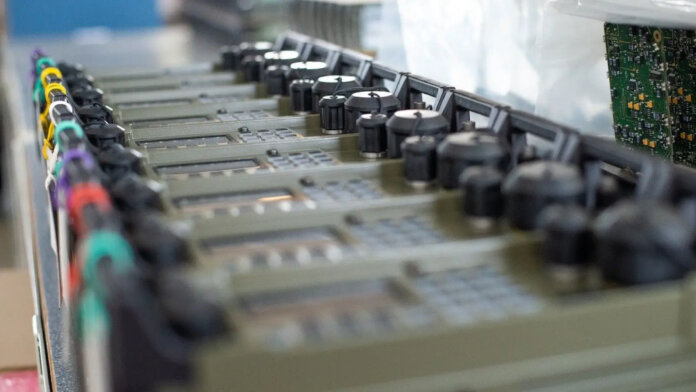
NATO’s long-standing quest to introduce a secure, wideband networking waveform to be used across its membership may be nearing conclusion.
It seems highly likely that NATO will adopt the pan-European High Data Rate Waveform to satisfy the alliance’s outstanding requirement for a wideband networking waveform to enhance alliance interoperability.
Sources close to the pan-European ESSOR (European Secure Software Defined Radio) waveform project have told Armada that this waveform will be adopted by the North Atlantic Treaty Organisation (NATO). The key deliverable for the ESSOR programme is its High Data Rate Waveform (HDRWF). The HDRWF is an ultra-high frequency waveform using a waveband of 225 megahertz/MHz to 400MHz. Up to 200 nodes can be housed on a single HDRWF network. The waveform can handle data rates of up to one megabit-per-second. It can sustain full duplex data and voice-over-internet-protocol communications. Transmission security includes fast frequency hopping, and it can work in environments where global navigation satellite signals are badly degraded or denied.
The ESSOR project is being realised via an international effort involving Finland, France, Germany, Italy, Spain and Portugal. All six countries will be introducing the HDRWF into their tactical communications over the coming years. The A4ESSOR consortium is the industrial element of the programme involving Bittium, Indra, Leonardo, Radmor, Rohde and Schwarz, and Thales.
NATO has an outstanding requirement for a secure wideband waveform as articulated in its Standardisation Agreement 5651 (STANAG 5651). STANAG 5651 covers the specifications for a high data rate networking waveform to be used across the alliance. The waveform will enable the high-volume movement of voice and data traffic between NATO land forces. The waveform’s adoption would be a major step forward to enhance interoperability across alliance land forces. NATO has had a long-standing requirement for a waveform with these attributes to have been satisfied by the COALWNW (Coalition Wideband Networking Waveform) initiative. However, Armada has been told that the COALWNW initiative has all but terminated. Despite the demise of COALWNW, NATO’s requirement has not dissipated and ESSOR is in pole position to satisfy this.
ESSOR Deconstructed
The OCCAR (Organisation Conjointe de Coopération en Matière d’Armement/Organisation for Joint Armament Co-operation) pan-European defence procurement agency announced in April that the HDRWF was undergoing ratification to satisfy STANAG 5651. Armada understands that, as of mid-September, this process is expected to conclude imminently. Once ratification is complete, NATO nations could use the HDRWF to satisfy high data rate waveform requirements. Armada was told that nations would then be free to use the waveform to enhance intra-force and inter-force connectivity within and between other NATO land forces. Several nations have requirements to this end such as the United Kingdom.
The UK had previously ruled out joining ESSOR or adopting the waveform. Instead, UK officials told Armada they were waiting to see how COALWNW would develop. ESSOR’s adoption for STANAG 5651 would seem to imply that COALWNW is now dead. This may open the way for the HDRWF’s adoption across the alliance, marking an important step forward in NATO’s quest to deepen coalition networking.
by Dr. Thomas Withington












